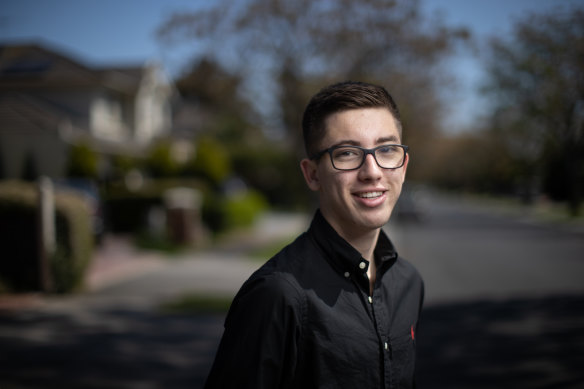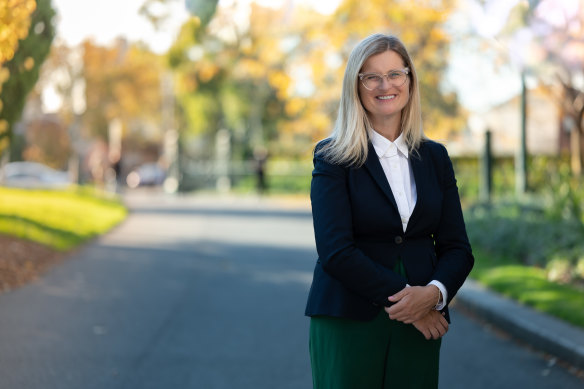Spring Street wants to build thousands of homes. It could face a battle with local election candidates
By Cara Waters, Sophie Aubrey and Nathanael Scott
Many local election candidates are prioritising green space and heritage over housing, setting up a potential showdown with the state government over its ambitious housing targets.
In a major survey of candidates on key issues, The Age heard from 677 of the 1478 candidates running for council elections in Greater Melbourne this month.
Almost nine-in-10 candidates who responded did not agree housing should be prioritised over green space and heritage. Asked if it should be, 12.1 per cent said yes, 45.3 per cent said no and 42.5 per cent couldn’t say.
Use our interactive to see who the candidates are in your area and what they said on key issues.
If you are reading this article on our app and the interactive does not load, click here.
Candidates were also asked what the three key issues were that they wanted to advocate on council. Only 5 per cent nominated increasing housing density.
The state government plans to build 800,000 homes over the next 10 years in a move described by then-premier Daniel Andrews as “the most comprehensive shake-up of one of the most important policy areas in decades”.

Jamie Nikolovski is one of the youngest candidates running for council and is particularly concerned with housing. Credit: Simon Schluter
Recent data from the Australian Bureau of Statistics showed Victoria is on track to approve fewer than 45,000 homes for construction in 2024, down from 51,000 last year and well short of the Allan government’s target of 80,000 homes a year for the next decade.
A state government spokeswoman said it had no plans to slow down its housing changes and would instead double down.
“Building more homes should be a priority for every level of government because blocking homes means blocking Victorians from living near their families and where they grew up,” she said. “Over the next few months we’re going to outline new key policy changes to build even more homes, while ensuring communities have the infrastructure they need.”
The Allan government has flagged stripping Victorian councils of their planning powers if they miss targets for new housing.
Election analyst and Tally Room founder Ben Raue said there was a structural incentive for councillors to oppose building new housing as they were focused on the impact on their own local area.
“The interests that a council or a council candidate has to address are very much just of the people currently in the area,” he said. “People who currently live in the area are uniquely uninterested if you’re building more houses, because they already have a house.”
Raue said this was particularly true of home owners.
“If anything, they might have a disincentive to have more homes, because that means more people sharing resources and cars on the roads,” he said.
Victoria Chipperfield, who is running for council in the City of Yarra in the Yarra For All party, owns her home and said housing should not be prioritised over heritage and green space.
“Melbourne has had a massive increase in multi-user developments with no additional green space for residents’ wellbeing,” she said.
Seventy-four per cent of council candidates who responded to the survey own their own home, while 16.8 per cent are renting.
Melton City Council candidate Ashleigh Warren, 21, rents her home in Melton. She said she had applied for over 200 rentals and only heard back from one.
“Equitable housing is at crisis point. It’s hard to enjoy green spaces when it may be your home [that’s not being built]” she said.
A common argument of YIMBY (Yes In My Back Yard) groups which advocate more housing development has been that councils are dominated by home owners who often oppose housing developments.
According to the survey results, whether a candidate was a renter or owner-occupier appeared to not make a difference.
The proportion of people who said “yes” to prioritising increased housing density over green space and heritage was almost the same as across all survey respondents – 17.2 per cent were renters and 64 per cent owner-occupiers.
Jonathan O’Brien, lead organiser of YIMBY Melbourne, said many council candidates who rented were running for the Greens, so it was likely their priority was for green space over housing.
“It’s a fundamentally good thing to see more renters represented in local government, even if there is not on the surface a huge split in the views,” he said. “It is really important that people who have a less secure tenure state are still able to be represented in our democratic system.”
The average age of respondents who said “yes” to prioritising housing skewed slightly younger, at 42, compared with the average age of those who said no, at 49.
One of the youngest candidates running for council, Jamie Nikolovski – an 18-year-old who lives at home with his parents in Whittlesea on Melbourne’s northern fringe and is completing his VCE – said housing should be prioritised.
“Whittlesea is already an established suburb. I think there could be more development in the northern part as that area is farmland and that area is prime for suburban development. It is perfect to increase housing supply,” he said. “Common sense should prevail here. Some land is perfect for developing, while other [areas] of beauty aren’t.”
In the same council area, Donny Batten, 71, one of the oldest candidates seeking election, also prioritised housing.
Batten said his family sold its 26-hectare farm in 1998 for $350,000, and prices were now more than $400,000 for a home.
“In this area, let’s concentrate on getting more houses,” he said. “There’s enough green space.”
Whether respondents lived in Melbourne’s outer or inner suburbs did affect their views on housing supply.
In the outer suburbs, 14.4 per cent said housing should be prioritised over heritage and green space, 46.9 per cent said it shouldn’t be and 38.62 per cent said they couldn’t say.
Of the respondents in inner Melbourne – comprising the City of Melbourne, Port Phillip, Yarra, Stonnington, Maribyrnong, Hobsons Bay, Moonee Valley, Merri-bek, Darebin, Banyule, Boroondara, Glen Eira and Bayside – only 9.7 per cent said housing should be prioritised and 43.6 per cent said heritage and green space were more important. Some 46.6 per cent said they could not say, compared with 42.5 per cent in the survey overall.

Darebin Mayor Susanne Newton.
Darebin Mayor Susanne Newton, who is a home owner and is running for election for the Greens, responded “can’t say” as she said it should not be an either/or question.
“You need more green space with densification of housing and to protect heritage,” she said.
Newton said more investment in infrastructure was needed given the state government was planning to double the number of homes in the council area.
Start the day with a summary of the day’s most important and interesting stories, analysis and insights. Sign up for our Morning Edition newsletter.